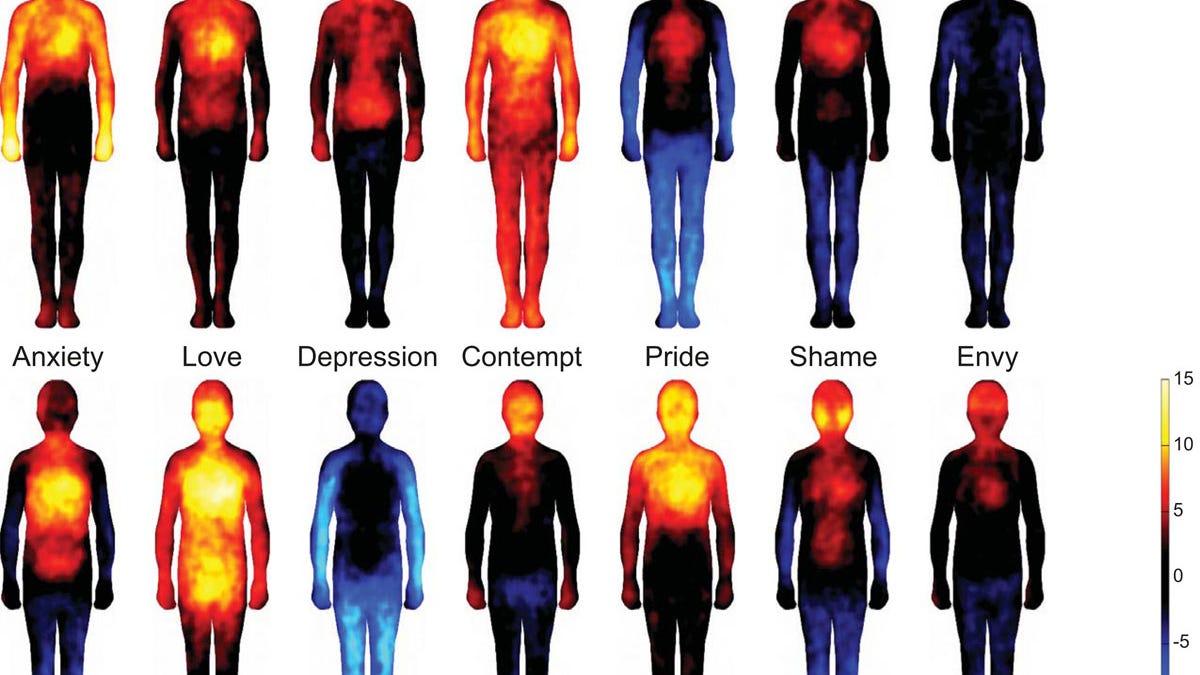Gut feelings? Cold feet? Body maps show where emotions go
Where is the love? Experiments with some 700 people in Scandinavia and Taiwan reveal universal locales for emotions from anger to happiness to pride and shame.

Have the winter blues got you down? Is a promotion at work making you swell with pride? Does watching kids take "selfies" (and then use the word) elicit contempt?
Chances are, these emotions are making you feel physical sensations in the same parts of your body that others feel them in their bodies, according to new research published this week in the Proceedings of the National Academy of Sciences.
In experiments with 701 participants from Sweden, Finland, and Taiwan, two silhouettes of bodies were paired with facial expressions, stories, emotional words, or movies, and the participants were asked to color the regions of body images where they felt increasing (in yellow) or decreasing (in blue) sensation while viewing the stimuli. Black would indicate no change in sensation.
The obvious issue here is that the participants were self reporting -- so the results could be influenced by, say, cultural norms that make people think they are experiencing, for instance, an increased sensation in their chest associated with love or a decreased sensation in their feet associated with the "cold feet" of fear.
What's interesting, the researchers write, is that this self reporting was universally consistent across cultures and genders. Different emotions were, in fact, consistently associated with what the Finnish researchers call "bodily sensation maps" across the range of experiments: "We propose that emotions are represented in the somatosensory system as culturally universal categorical somatotopic maps."
And while each emotion generated its own distinct map of bodily sensation (see above), some of the maps show considerable overlap. Anger and fear, for instance, are associated with heightened sensation in the chest, while sadness and depression share a drop in sensation in the legs and feet.
The only emotion to show an increase in sensation pretty much across the body -- so to speak -- is happiness (love comes closest), while the only to show no increase in sensation anywhere is depression, giving new (if unnecessary) justification to the name describing the condition.
Now, what to do with the maps? The researchers say they hope to continue to develop and fine-tune them so that they can ultimately serve as biomarkers that help us better identify -- not to mention understand and treat -- a range of emotional disorders.

